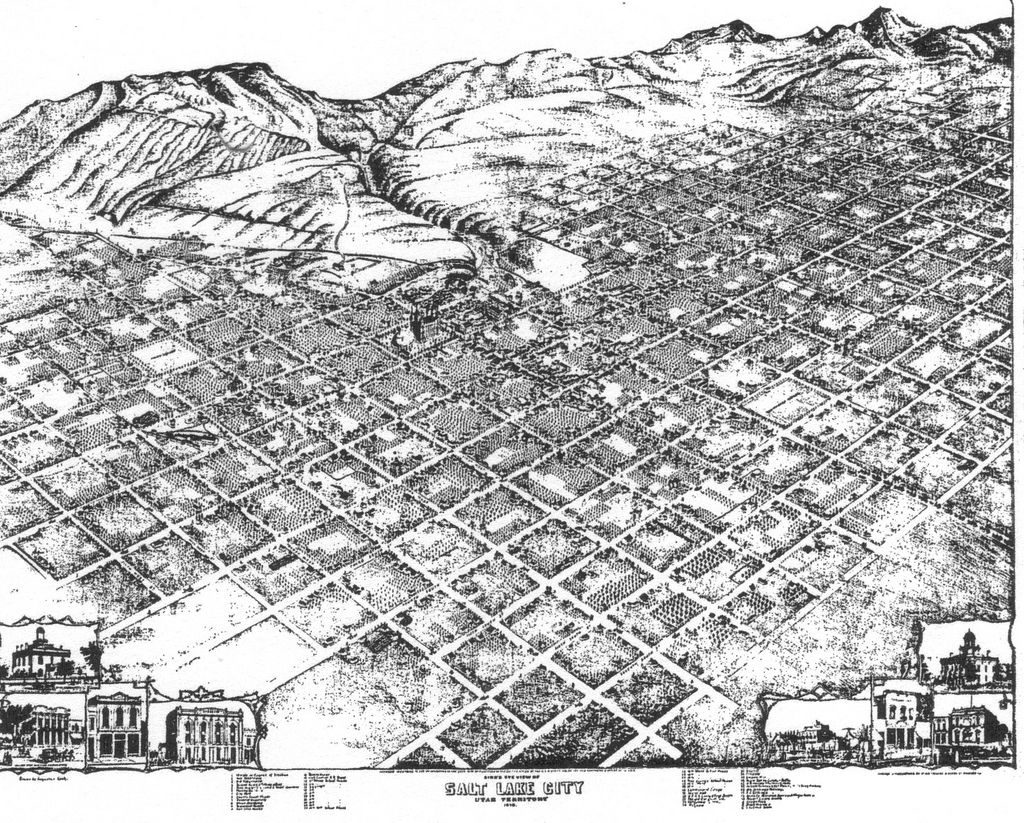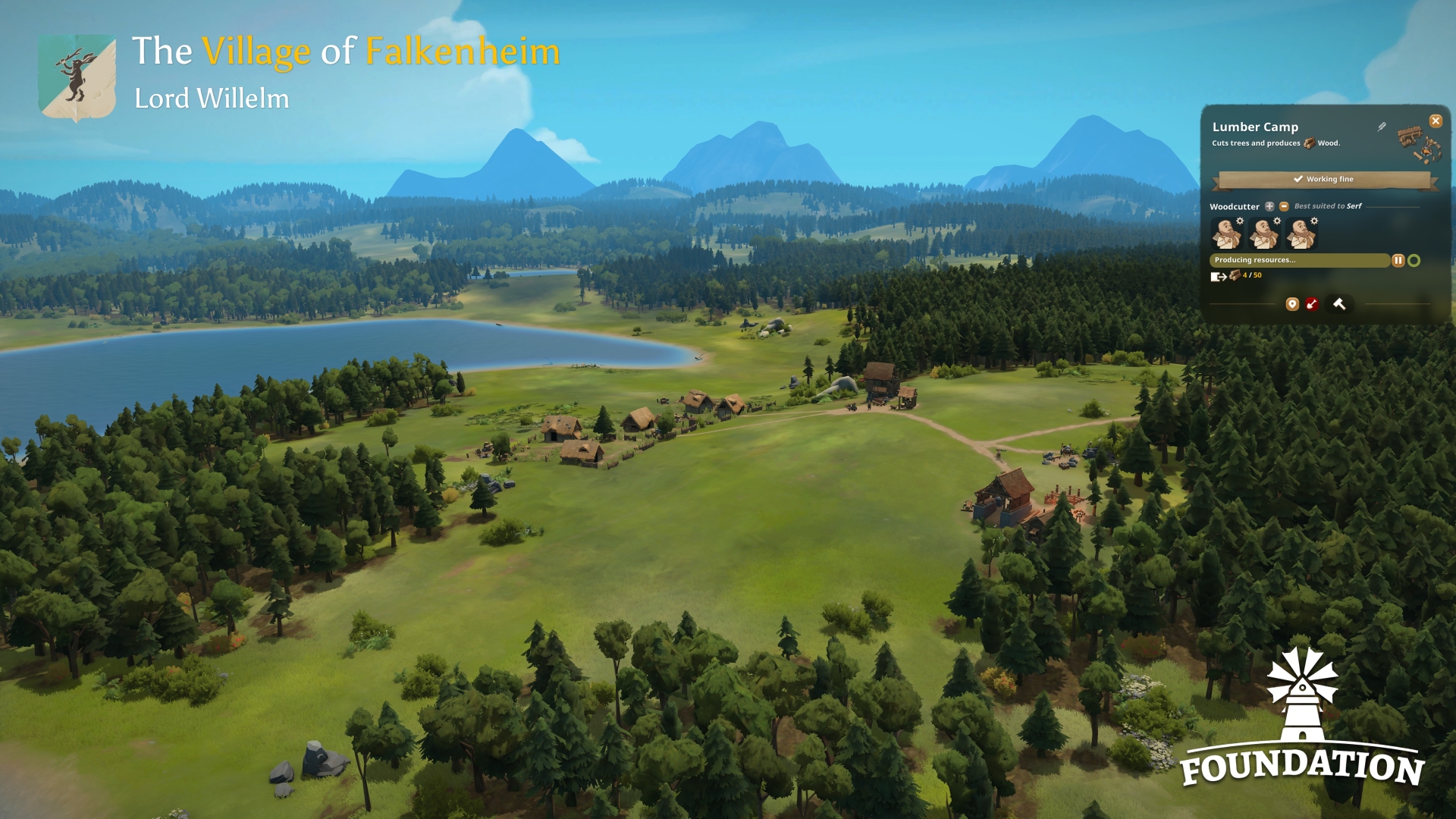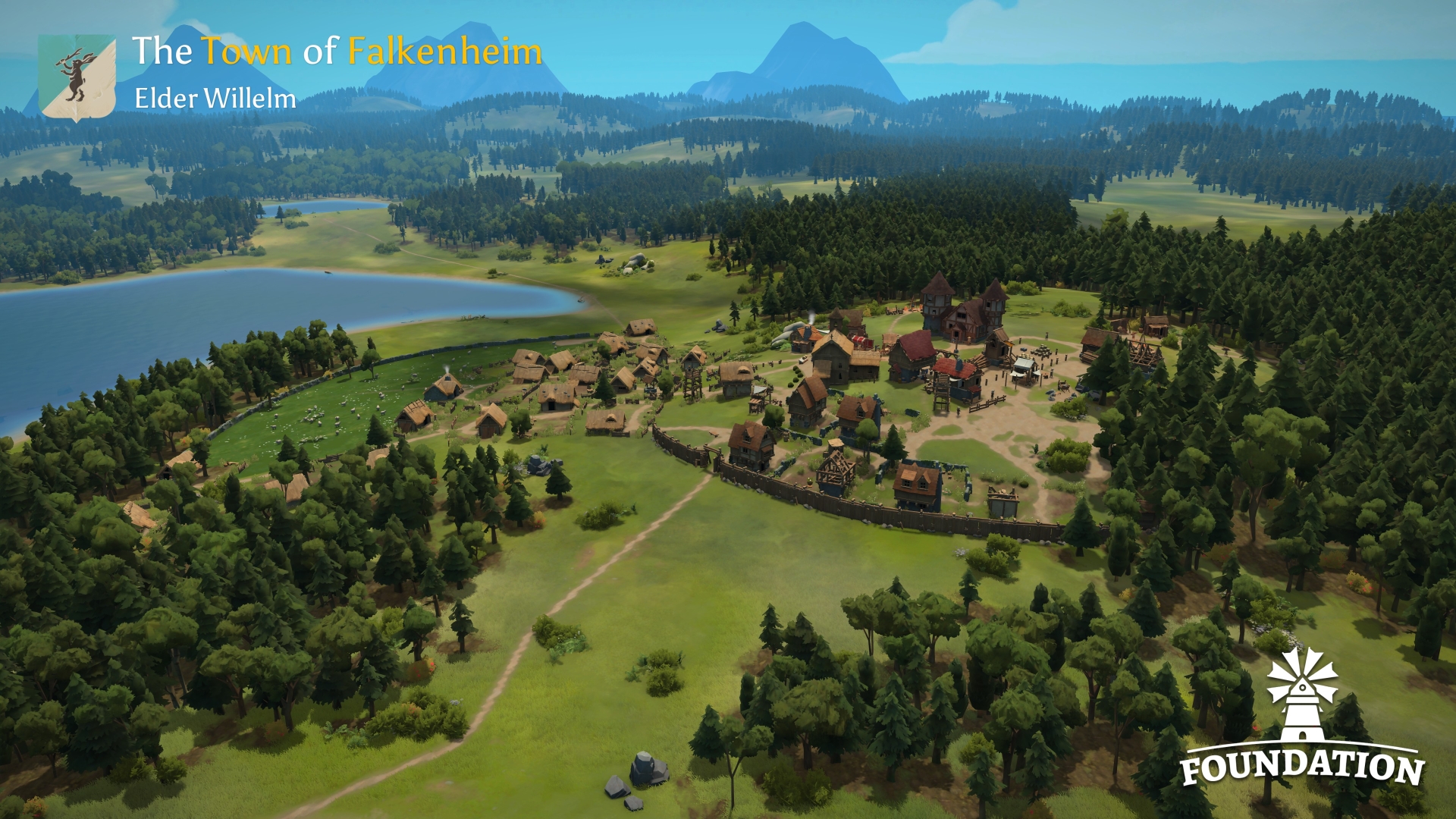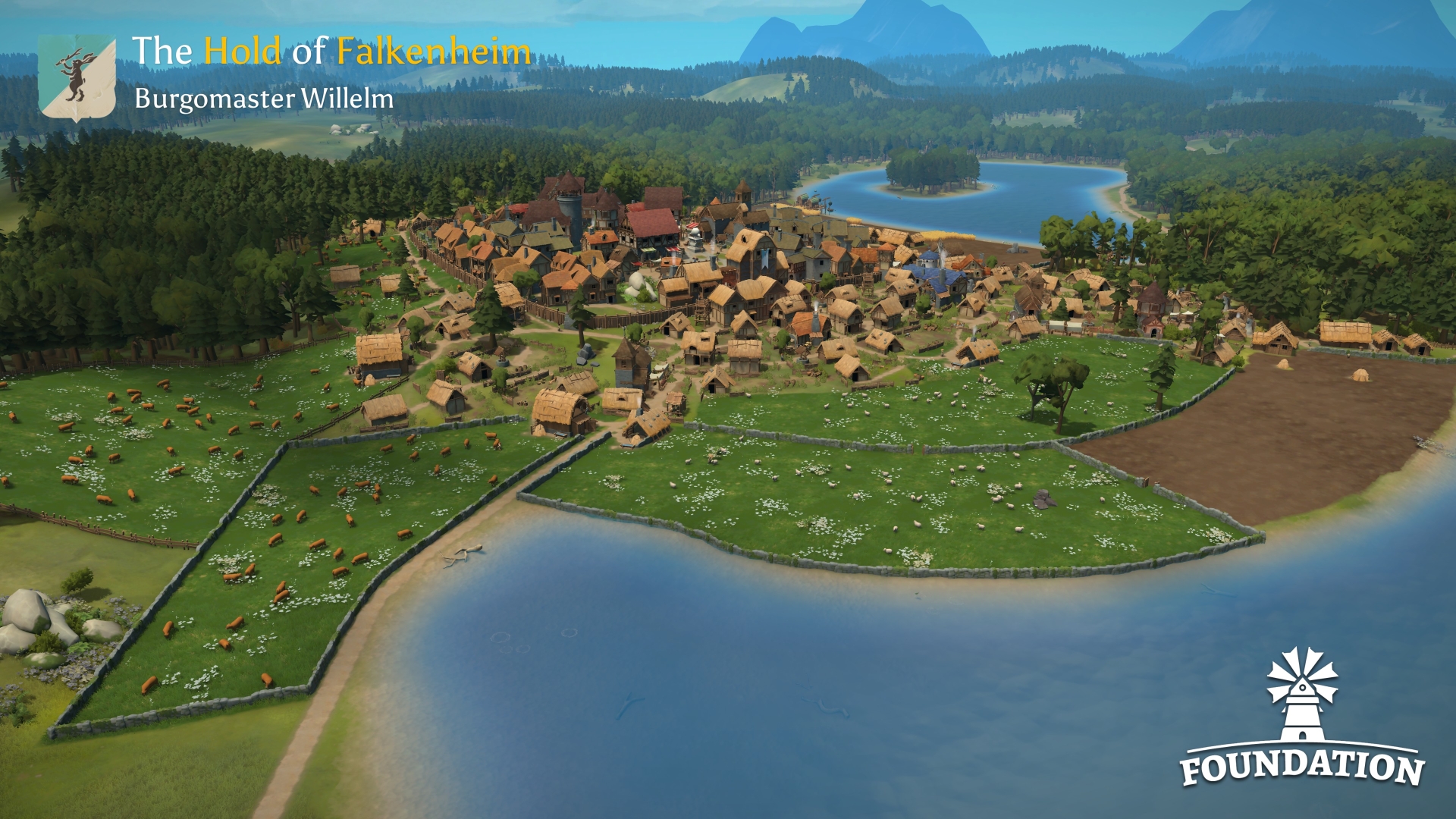Foundation: from organic sprawl to production woes
I’ve always been a fan of city builders. Many city builders use a grid, which makes sense from a gameplay standpoint but can be limiting to creativity. Even in games that don’t require you to follow a grid - like Cities: Skylines - it’s easy to fall into building identical squares. It’s efficient and works just fine. But grids can be boring; grids are missing a soul: the aesthetics are repetitive, the feel is inorganic, and the layouts are predictable. I think of genres like city builders as a method of self-expression, and you do need a soul for that.
 Salt Lake City: that’s a lot of squares.
Salt Lake City: that’s a lot of squares.
In city planning specifically, grids are a relatively modern idea - organic growth doesn’t follow a grid, and grids are an artifact of manufactured design (sorry, Barcelona, I know you’ve done great work with your grids).
So, I was really excited to jump into Foundation, a game that advertises itself on natural city growth and gridless building. If you can see a spot between buildings, you can plop another building right there, no matter how awkward it is. This results in these fun, sprawling cities that look way more natural, and I really enjoyed the result.
My town started off with a couple of huts and a few basic buildings for food and construction materials - just the essentials to get things going.
 The game suggested I name the town Falkenheim. I thought that was funny, for whatever reason.
The game suggested I name the town Falkenheim. I thought that was funny, for whatever reason.
Over time, my town grew little by little. I gathered more resources, unlocked new tech, started trading, and began to expand my borders.
I like how Foundation handles territory - it’s a unique take I haven’t seen before. You start off on an irregular, rather small plot of land. So when you build, you’re forced to follow the natural curves of the plot. The plots are small and curved, so you really can’t build in a grid - you have to work with the shape to maximize available space. This free-flowing approach to territory directly influences the early game production chains, as you’re constantly adapting your layout to the limited land.
 You can see how the village started taking shape. Sheep pastures and more rural housing to the left, city center with more urban developments to the right.
You can see how the village started taking shape. Sheep pastures and more rural housing to the left, city center with more urban developments to the right.
This also resulted in much more natural transition between types of buildings. Unlocking small plots of land piece-by-piece at different stages of the game results in sharp contrast between districts - but with more organic lines in between.
But once my population got past a few hundred people, I started clashing against a mechanic Foundation fell flat on. Trying to balance wheat to flour to bread, or milk to cheese, was surprisingly hard. I constantly had either not enough materials or way too many. The game seems really well-optimized for the early game, where territory dictates and actively limits your flow. However, I found the late-game production balancing to be a real challenge, as sprawling, organically grown cities made efficient resource management a logistical nightmare. The game didn’t really have the tools for managing economy at scale, and I often found myself flying blind and unexpectedly running out of previously abundant resources.
This is mostly due to the fact that the buildings rely on denizen AI - if a worker at a mill decides to go on a hike to the further well in town, for whatever reason, they won’t be producing resources. And there are enough AI hiccups for this to become a problem at scale. Resources are produced in unreliable bursts, and production throughput and ratios are not surfaced in UI.
This is in stark contrast to games like Anno 1800, which doesn’t provide detailed citizen simulation - but instead, you’re able to rely on consistent output ratios. This is the unfortunate downside of the way Foundation’s systems are implemented.
 Falkenheim grown into a beautiful, sprawling medieval city. You can see history in the way various districts curve around each other.
Falkenheim grown into a beautiful, sprawling medieval city. You can see history in the way various districts curve around each other.
Despite these late-game production headaches, I had a grand time with Foundation. I got pulled into the game and enjoyed the process of building a beautiful medieval city. The struggle to balance organic growth with efficient production was a unique challenge, and I’m glad that Foundation invested time into the former: it made the city builder feel fresh. Foundation delivers on its promise of soulful, gridless city-building, even if that soul comes with a few logistical quirks.
Comments
Respond directly on Bluesky (threads shown below) or Medium (view comments there).
 Rooslawn's Unmapped Worlds
Rooslawn's Unmapped Worlds